More couples are saying “I do” with vintage and antique engagement rings.
Pandemic or not, couples are still seeking their happy-ever-afters and putting a ring on it — a vintage engagement ring, that is. Estate dealer Catherine Thies, co-owner of Filigree Jewelers in Minneapolis, Minnesota, has seen a huge increase in demand for such rings. For Jared Klusner, founder and head buyer of Erstwhile vintage jewelry in New York, sales have particularly gone up since Covid-19 began. Not being able to schedule a big wedding event has “allowed people to put more money into their engagement rings,” he believes. Thies affirms that a ripple effect of couples rescheduling, downsizing or even canceling large weddings has been extra funds available for fine jewelry. “We have even seen couples come in and purchase a special piece on what would have been their original wedding date.”
Julie Walton Garland, third-generation co-owner of Walton’s Antique & Estate Jewelry in Franklin, Tennessee, says many clients love “that antique jewelry works for old, blue and even borrowed” — a reference to the traditional bridal poem. “Mothers of the bride or groom often purchase a pair of statement antique sapphire earrings, a necklace or a bracelet for the bride to borrow on her big day.”
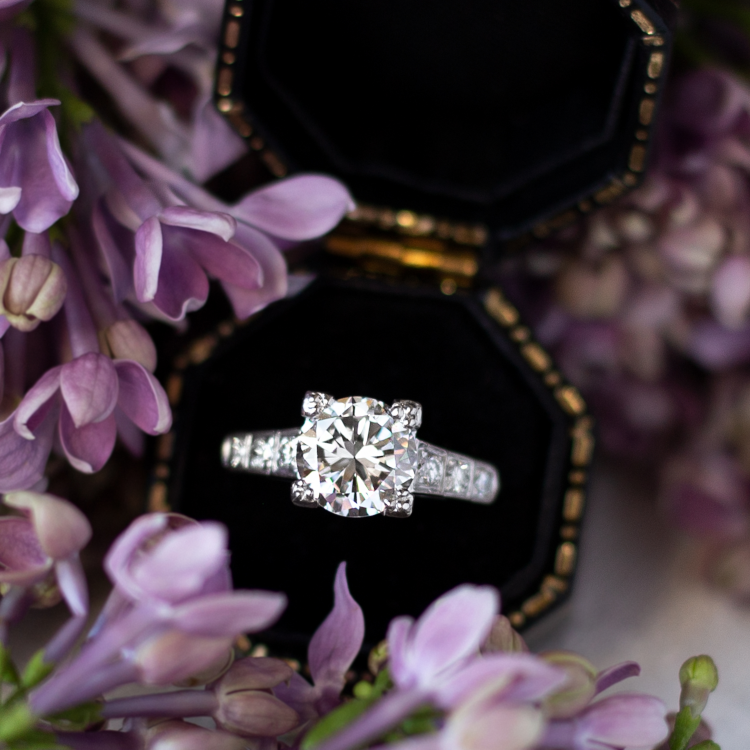
Ageless appeal
Garland’s clients “come from a large range of backgrounds and ages,” she says, but they are all “searching for a unique, one-of-a-kind piece that has a history or story to tell. We have also seen an increase in clients wanting to purchase a piece that is environmentally conscious, which antique and vintage pieces most definitely are.” At Filigree, 24- to 34-year-olds make up the majority of Thies’s bridal clients. She, too, has found that they desire to be “sustainable and mindful” with a purchase that is “more eco-friendly.” Adding to the appeal, she says, is that “wearing a vintage ring means you will never see it on anyone else.”
Uniqueness is also a factor for Klusner’s clientele, which ranges from millennials “all the way to baby boomers.” But the majority of them are the former, he states, and they are “really careful about their purchases. They want to know it has a nice story behind it.” Most of them “want to know that what they are buying wasn’t in the hands of someone or something that was causing pain and suffering to others around them.”
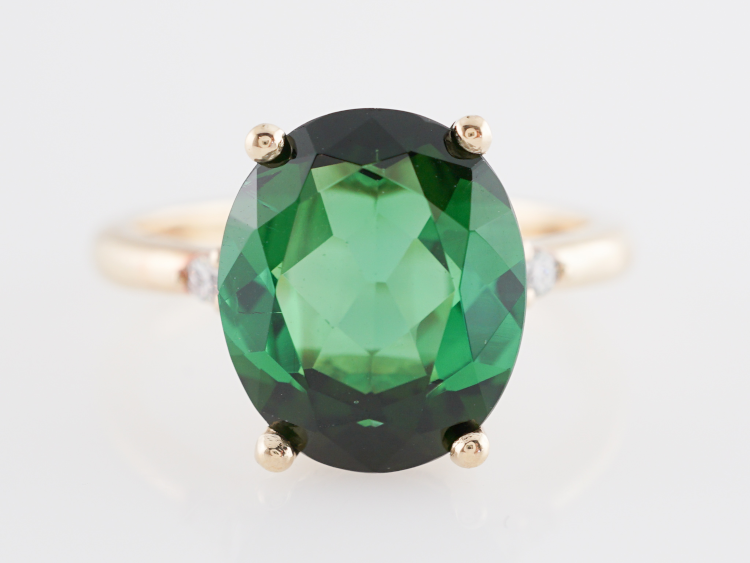
Across the decades
Diamond rings from the Art Deco era are Garland’s number-one seller. “They are classic and timeless and have intricate details that aren’t fussy,” she comments. Thies, meanwhile, has observed a jump in demand for colored-gemstone engagement rings, including tourmaline and/or aquamarine. Klusner has seen “anything from sapphires, rubies and emeralds to hardstones like turquoise, precious topaz and aquamarine selling across the board.”
In addition, he says, settings in yellow gold have been trending for the past few years, particularly Victorian styles. Thies, too, has seen yellow gold make “a huge comeback in the past three years. We have expanded our yellow gold inventory to triple what we showcased two years ago. Old mine-cut diamonds of interesting shapes, three-stone old European-cut diamond rings, and fancy shapes in yellow gold are the most popular. Victorian and Art Deco yellow gold rings are the biggest trends in the market today.” She also sees “thicker and more substantial designs becoming more popular. Clients are moving away from the micro-pavé thin diamond settings.”
Klusner says a lot of people are “keeping it simple” with a traditional solitaire ring. “Round is always the most popular shape. Old mine cushions are so popular that there’s a shortage of them, and it’s almost impossible to find now.”
People gravitate toward the elongated diamond shapes as well, he adds, as “styles with a long edge look good on the finger.”
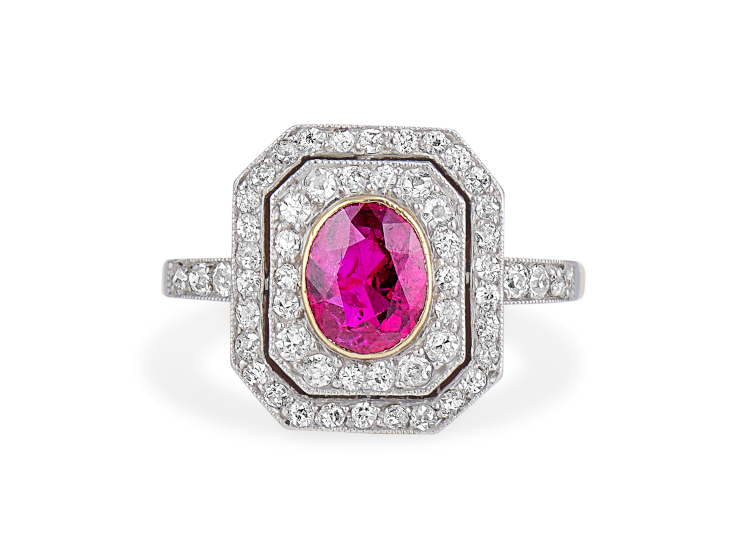
Supply and demand
The amount clients are willing to pay for their rings spans a “wide range,” according to Klusner. Thies says the average price point has “definitely increased in the past five years,” with bridal clients “spending between $7,000 and $15,000.” Garland agrees that spending can vary greatly, but says her average has been about $5,000 to $10,000.
Finding the goods to sell these customers takes effort, however. Being in business for nearly 50 years has helped Garland cultivate “incredible relationships with our vendors, and connections within the industry when it comes to purchasing pieces for our inventory.” However, due to the popularity of antique and estate jewelry, she says, “it has been more challenging to find some highly sought-after pieces, so we are very grateful to have these deep connections that my grandmother, Melba, started in the 1970s.”
Klusner, a fifth-generation jeweler, also relies on connections formed over the past 20 years, and he works with these sources “on a daily basis.” However, he admits, “it is getting harder to find good-quality engagement rings, and as time goes by, the prices go up because the supply is thinning.” The advent of Covid-19 hasn’t helped the situation. “Old European- and mine-cut diamonds were difficult to source prior to the pandemic, but are even more so now,” remarks Thies. “We have relied on our connection with US dealers sending us packages on a regular basis for the past 18 months to be able meet our demand.” It is a demand she hopes will continue “for decades to come.”
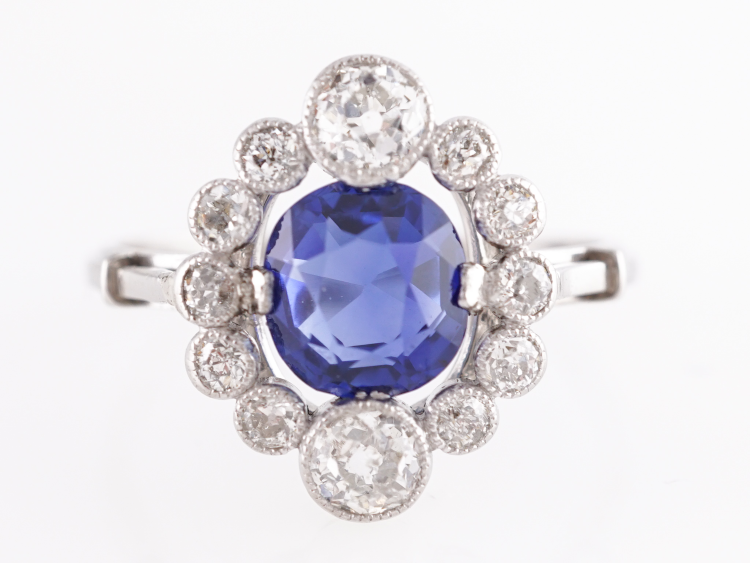
HANDY TIPS
Three dealers offer advice on growing an estate bridal segment
Julie Walton Garland, Walton’s Antique & Estate Jewelry
“Do your research. There are a lot of ‘new-made-to-look-antique’ pieces out there. Study the cuts of the stones, styles, craftsmanship, hallmarks, etc., in order to provide the most accurate and honest details for your clients.”
Catherine Thies, Filigree Jewelers
“There will be a level of maintenance and repair with antique jewelry. Be prepared to set up expectations with the client about how and when an antique ring should be worn.… A Victorian or Art Deco ring is 100 years old and should be treated like an antique. Otherwise, you can end up with a repair nightmare and a very upset client.”
Jared Klusner, Erstwhile
“[It’s important to be] sensitive to the fact that this is a very special moment and there’s a lot of emotion involved. We take that into consideration when doing a transaction.”
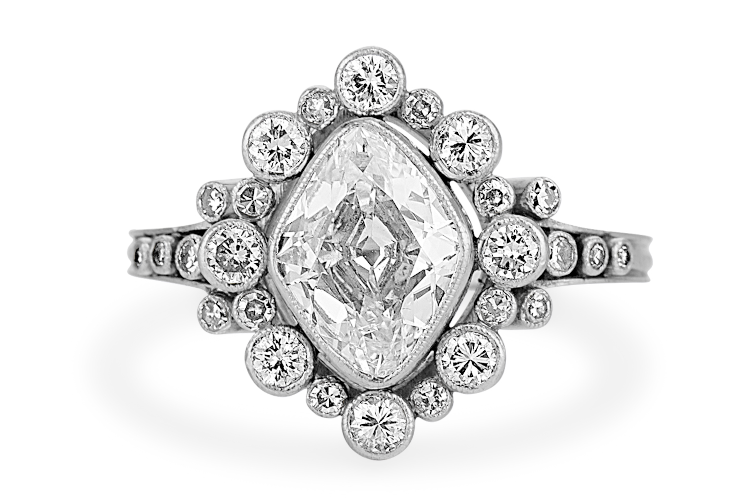
Main image: An Art Deco ring in platinum set with an old European cut diamond, and diamonds from Walton’s Antique & Estate Jewelry. Photo: Mary Rozas.

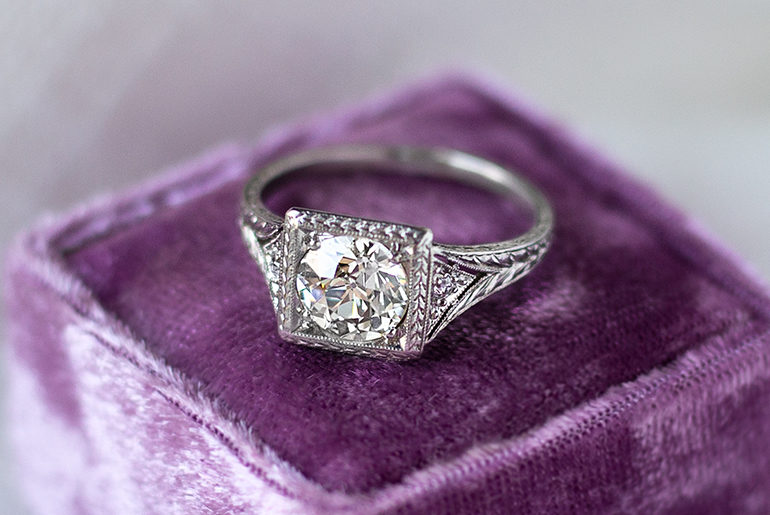
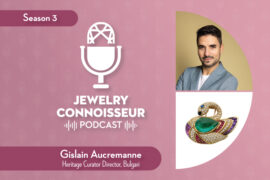
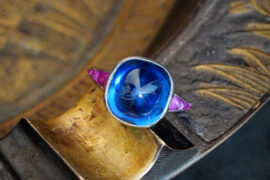
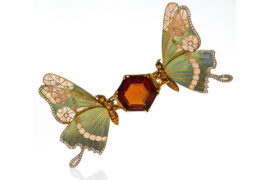
3 Comments
Pingback: The alternative bride - Jewelry Connoisseur
Pingback: Neutral ground - Jewelry Connoisseur
Pingback: Laced with romance: Megan Thorne - Jewelry Connoisseur